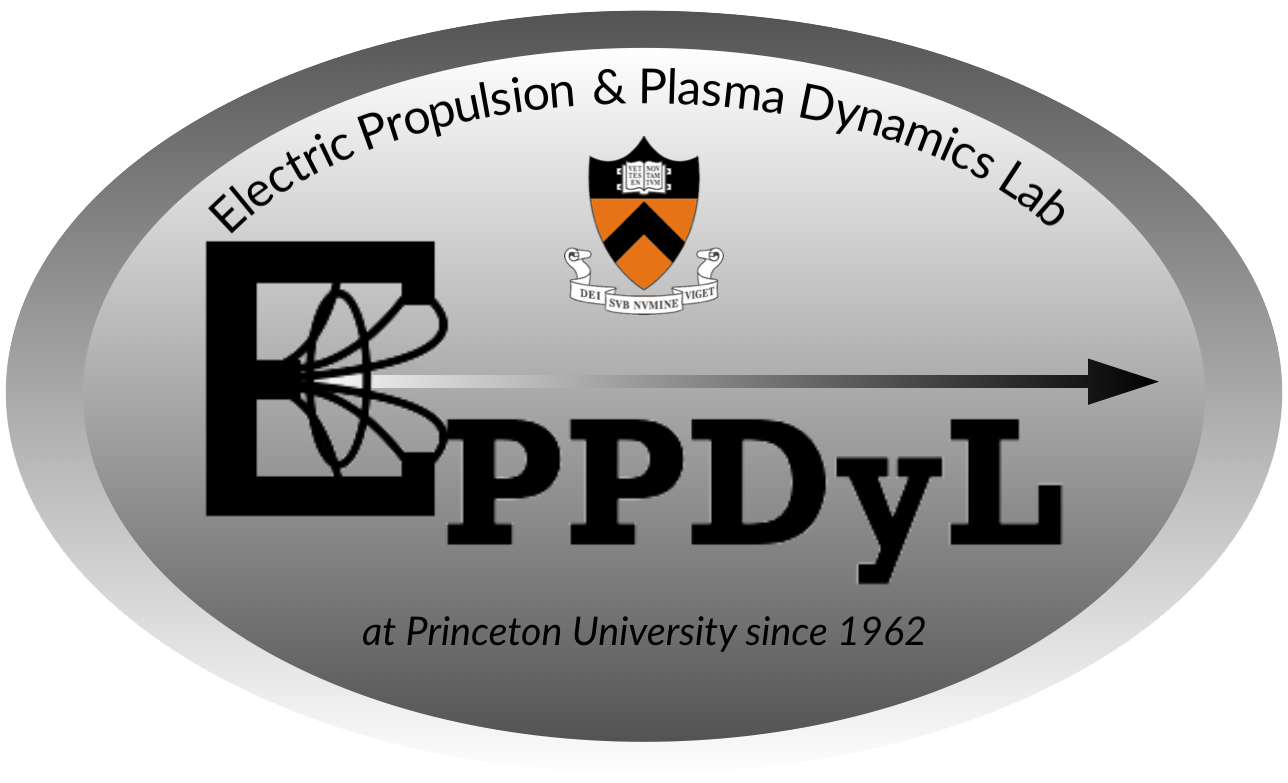Scaling Laws in Orificed Thermionic Hollow Cathodes
Download
Scaling Laws in Orificed Thermionic Hollow Cathodes
Abstract
Scaling laws for the total pressure, attachment length, and electron temperature within thermionic orificed hollow cathodes, an essential source of electrons for industrial and scientific applications, are developed. Total pressure, electron temperature, and attachment length are critical as they control the operational life of thermionic hollow cathode inserts, and, therefore, of the hollow cathode.
The scaling laws are derived from first principles for the total pressure, and from a semi-analytical approach for the electron temperature and attachment length. The model presented herein addresses critical issues of past, zero-dimensional models that are reviewed in this work. The model, which combines a zero-dimensional approach to the conservation of energy and momentum for the combined plasma-neutral fluid and a charge-exchange-limited ambipolar diffusion model, allows for the computation of all plasma quantities, including the total fluid pressure. The assumptions on which the model relies are partially informed by an empirical analysis of the total pressure. The model depends on the operating conditions (discharge current and mass flow rate), cathode geometry, and the gas species, along with two non-controllable parameters: the neutral gas temperature and the sheath potential. Total pressure data at up to 300 A of cathode discharge current was obtained experimentally and was used, along with data from the literature, to verify the model. Good agreement is obtained for all quantities.
The total pressure is found to scale both with the square of the mass flow rate multiplied by a weak function of discharge current, and with the square of the discharge current. This scaling can be physically interpreted as due to the relative importance of the magnetic pressure and the gasdynamic pressure. Both electron temperature and attachment length are found to vary inversely with the neutral gas pressure-cathode diameter product. The predicted emission length is found to be between 0.8-1.2 times the insert radius, to scale weakly with the pressure-diameter product, and to be nearly independent of the orifice diameter. The analysis suggests that the diffusion-dominated nature of the insert plasma can account for the scaling of the emission length. Cathode design rules are formulated based on the results of the analysis: insert length and radius should be similar to optimize the usage of the thermionic emitter, and the mass flow rate can be bounded such that the pressure-insert diameter product is close to the empirically determined value of 3.7 Torr-cm.
